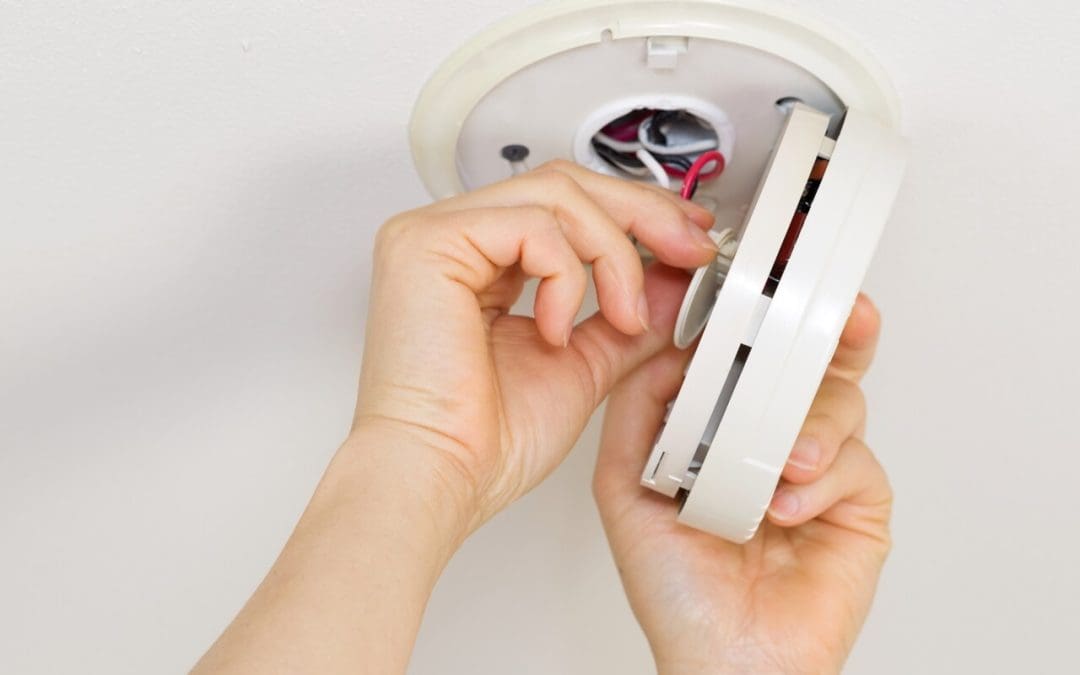Keeping your home safe doesn’t have to be complicated. A few simple habits, a little planning, and the right tools can go a long way. Whether you’re a new homeowner or have been in your place for years, it’s always a good idea to take a step back and ask yourself if your home is as safe as possible. Let’s walk through some home safety essentials that help protect your home and your loved ones.
Home Safety Essentials: Start with Fire Safety
Fires can happen quickly and without warning, so fire safety is a top priority. Every home should have working smoke detectors. The key word there is working. Test them monthly and replace the batteries at least once a year. If they’re more than 10 years old, it’s time to swap them out.
You should also have a fire extinguisher in the kitchen and anywhere else there’s a potential fire risk, like near a fireplace or in the garage. Make sure everyone in the house knows where it is and how to use it. It’s also smart to create a fire escape plan. Everyone should know how to get out quickly and safely if a fire breaks out.
Lock It Down
Keeping your doors and windows locked seems obvious, but it’s surprising how often folks forget. Deadbolts on all exterior doors add another layer of protection. If your doors have glass panels or nearby windows, consider using reinforced glass or placing locks in spots that can’t easily be reached from outside.
Security systems can also add peace of mind. Even a basic camera setup or a video doorbell can help you keep an eye on things when you’re not home. If a full-blown system isn’t in the cards right now, motion-activated lights are an easy and affordable upgrade that can deter would-be intruders.
Be Aware of Carbon Monoxide
Carbon monoxide is a silent danger. You can’t see, smell, or taste it—but it can be deadly. Every home with gas appliances, fireplaces, or attached garages should have a carbon monoxide detector. Put one near bedrooms and check it regularly to make sure it’s working properly. If it ever goes off, don’t ignore it. Get outside and call for help.
Prevent Trips and Falls with These Home Safety Essentials
Falls are among the most common causes of injury in the home, especially for kids and older adults. Start by keeping walkways clear. Don’t leave shoes, cords, or other items in high-traffic areas. Make sure stairs have sturdy handrails, and if you’ve got rugs, use non-slip pads underneath.
In bathrooms, consider adding grab bars and non-slip mats. Good lighting also makes a big difference—especially in stairwells, hallways, and entrances. If you have outdoor steps, check that they’re even and in good shape. Uneven or cracked steps are an accident waiting to happen.
Electrical Safety is a Must
Electrical issues are a common cause of house fires, and many of them are preventable. Don’t overload outlets or extension cords. If you’re relying on multiple power strips just to keep things running, it might be time to rethink how your home is wired.
Look out for flickering lights, buzzing outlets, or switches that feel warm. Those are signs you might need to call in a pro. If you have young kids, outlet covers are a simple way to keep curious fingers safe.
Stay Ready for Storms and Emergencies
Mother Nature doesn’t always give much warning, so it’s smart to be ready for storms, power outages, and other emergencies. Have a basic emergency kit with flashlights, batteries, a first-aid kit, bottled water, and non-perishable food. A portable phone charger and a battery-powered radio can come in handy, too.
If you live in an area prone to hurricanes, tornadoes, or wildfires, take extra steps. That might mean reinforcing windows, clearing brush around your home, or knowing where your safe room is.
FAQs on Home Safety Essentials
How often should I test smoke and carbon monoxide detectors?
Once a month is ideal. Also, change the batteries once a year, and replace the units entirely every 7 to 10 years, depending on the manufacturer’s instructions.
What’s the best way to secure my home if I’m on a budget?
Start with the basics: lock your doors and windows, add deadbolts, and use motion-sensor lighting. A smart doorbell camera can also be a great low-cost option.
What’s the biggest safety mistake homeowners make?
Ignoring small issues. A loose handrail, a leaky appliance, or a faulty outlet might not seem like a big deal now, but they can lead to major problems if left unchecked.
Is it worth getting a home inspection for safety?
Absolutely. A professional home inspection can uncover hidden hazards you might miss, especially in older homes. It’s a smart move whether you’re buying, selling, or just want peace of mind.
House2Home Inspections Services offers inspections to homebuyers and sellers in Hillsborough, Pasco, Pinellas, Manatee, Hernando, and Polk counties. Contact us to request an appointment.

